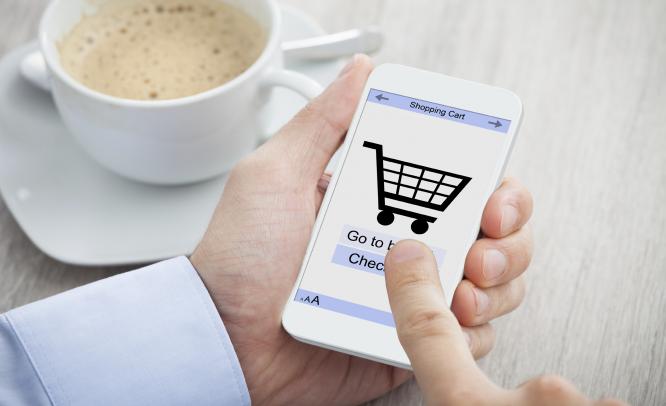However, companies need to invest more in mobile commerce to make the experience seamless for consumers
Suparna Goswami Bhattacharya
July 22, 2015: In the last decade, the one revolution that has taken everybody by storm is probably the evolution of mobile phones. From a device meant for making and accepting calls to a multipurpose gadget, the mobile phone has come a long way.
So much that e-commerce companies want to ditch websites altogether or shift to the mobile phone.
While computers remain the device most used for shopping online, mobile is a close second, with smartphones and tablets being the preferred devices for m-commerce. Even here, people prefer mobile apps over mobile browsers.
| According to Amit Goel, co-founder, GrowthPraxis, an information resource for the payments industry, of the total online payments made in Q1 of 2015, the share of mobile devices was 27.2 percent. “Of this, the share of the US was 26.7 percent while Europe’swas 28.6 percent. Asia stood at 20 percent. M-commerce is growing so fast that I expect retailers and commerce players shifting their focus completelyfrom web apps and desktop websites to mobile apps and mobile sites,” says Goel.Myntra, the leading online fashion retailer in India, has shut down its website and moved its entire operation onto the mobile app. The company is expecting sales through the app to reach 90 percent of its total sales by the end of the year. Hence, they see no point in managing the web interface any more. Myntra is owned by India’s e-commerce giant Flipkart, which acquired the company in 2014. In fact, Flipkart is expected to follow suit in September this year.
“Today, well over 75% of our traffic comes via the mobile app, compared to low single digits in 2013.Majority of these shoppers are from Tier II & III cities. The way India shops has changed.We are seeing a new wave of confidence from shoppers in smaller towns across all age groups,” says Mausam Bhatt, senior director, (Mobile & Digital), Flipkart. The story is nodifferent for the other Asian giant — China. For Alibaba, the leading Chinese ecommerce company, m-commerce has become a key driver of success. The mobile gross merchandise volume (GMV) for the quarter ending March 2015 rose by 157% as compared to the corresponding period in 2014. “Mobile shopping is a rising trend in China and Alibaba Group and its suite of mobile-shopping apps is the leading player in the country. |
 Source: Statista, 2015 Source: Statista, 2015 |
According to third-party research (iResearch), Alibaba leads the China mobile commerce market with an 86% share of the total mobile GMV,” says a spokeswoman from Alibaba.
With plans to expand abroad, Alibaba is likely to be one of the dominant mobile players even in the US where the company is busy with the groundwork.
Though the US has been a little slow in adopting m-commerce, lately it is seeing a surge. US-based Groupon, a deal-of-the-day firm, has also started seeing a shift towards mobile trend. “For us, the shift to mobile happened without us making any effort. We did not really initiate this push. But now, we are concentrating on m-commerce with website being equally important. We have tied up with ApplePay in the US to create a seamless mobile experience for our users,” says Sachin Kapur, CMO, Groupon India.
And the trend is not country specific anymore. “We are definitely witnessing this trend across the globe. According to Forrester, there will be nearly 3.5 billion individual smartphone users globally by the end of 2019. Because of such a huge number of users, every web-based company must take smartphone users very seriously,” says Bhatt
Despite witnessing huge growth in the past three years, m-commerce still remains a small portion of retail as a whole. According to IBM data analytics, on Black Friday, US biggest shopping day, mobile was 39.7 percent of all online traffic. However, mobile sales (21.8 percent of all online sales), though strong, was considerably less than the traffic. This is mainly because many companies are yet to develop a seamless mobile shopping experience for consumers. There is a shortage of mobile friendly m-commerce enabled sites forcing people to continue using their PCs or laptops for online shopping.
Also Read:
IT, mobile to drive growth in retail
‘Payments via mobile phones are predicted to grow to $58 billion by 2017’


